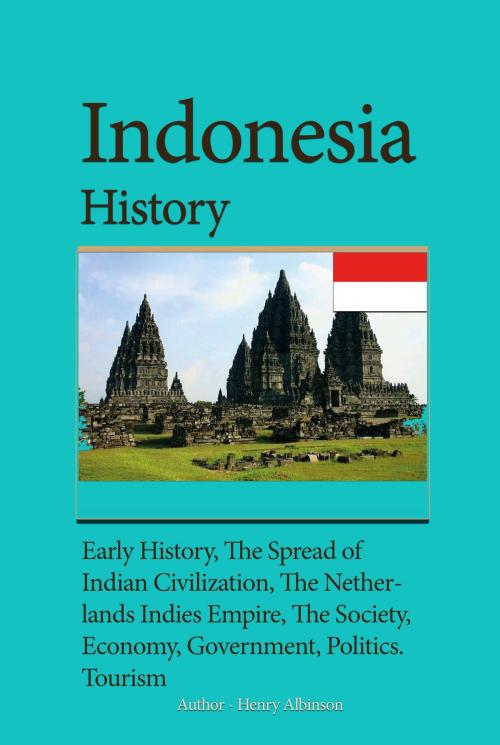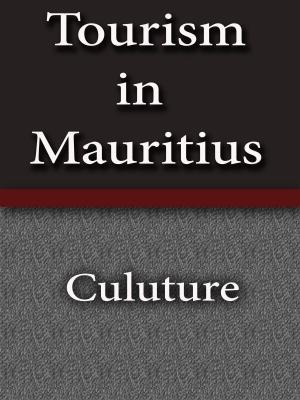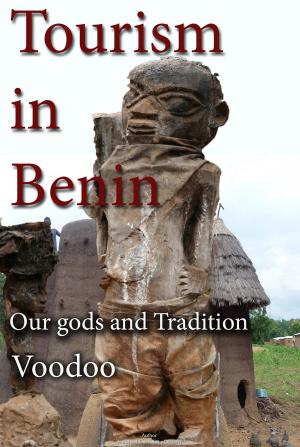| Author: | Henry Albinson | ISBN: | 9781310925788 |
| Publisher: | Sonit Education Academy | Publication: | June 25, 2016 |
| Imprint: | Smashwords Edition | Language: | English |
| Author: | Henry Albinson |
| ISBN: | 9781310925788 |
| Publisher: | Sonit Education Academy |
| Publication: | June 25, 2016 |
| Imprint: | Smashwords Edition |
| Language: | English |
In the Indonesia history book you also have, Indonesia Culture, Indonesia government and politics, Indonesia art and culture, Indonesia tourism and investment.
Beginning in the 1890s, paleontologists discovered fossil remains of creatures on the island of Java that, while probably not the direct ancestors of modern humans, were closely related to them. These Javan hominids, known by scientists as Homo erectus, lived 500,000 years ago and some possibly as long as 1.7 million years ago. Their remains are identified as Jetis--the earlier specimens found in eastern Java--and Trinil--later specimens found in Central Java, including the Solo River area. Evidence of probable descendants of the Trinil erectus, known as Homo soloensis or Solo Man, was found at Ngandong, also in Central Java; these descendants are thought to have evolved between 500,000 and 100,000 years ago. Assemblages of stone tools have not clearly been tied to Homo soloensis, but there is evidence that these early Homo sapiens had a rudimentary social organization (small hunting and gathering bands) and used simple tools around 40,000 years ago
Many observers agree that the modern inhabitants of Indonesia may be descended from Homo erectus. Although insufficient paleographical information makes it impossible to determine precisely the dates of migrations by modern Homo sapiens, contrary to earlier hypotheses of migration from the Malay Peninsula, many experts believe that Indonesia's early population-- comprised of the ancestors of most of its present inhabitants--was the product of continued hominid evolution within the archipelago. There was, of course, continuing seepage of other populations into the gene pool, contributing to the complex ethnographic picture of Indonesia. That the archipelago may have developed its own Homo sapiens line has not been ruled out by some scholars
In the Indonesia history book you also have, Indonesia Culture, Indonesia government and politics, Indonesia art and culture, Indonesia tourism and investment.
Beginning in the 1890s, paleontologists discovered fossil remains of creatures on the island of Java that, while probably not the direct ancestors of modern humans, were closely related to them. These Javan hominids, known by scientists as Homo erectus, lived 500,000 years ago and some possibly as long as 1.7 million years ago. Their remains are identified as Jetis--the earlier specimens found in eastern Java--and Trinil--later specimens found in Central Java, including the Solo River area. Evidence of probable descendants of the Trinil erectus, known as Homo soloensis or Solo Man, was found at Ngandong, also in Central Java; these descendants are thought to have evolved between 500,000 and 100,000 years ago. Assemblages of stone tools have not clearly been tied to Homo soloensis, but there is evidence that these early Homo sapiens had a rudimentary social organization (small hunting and gathering bands) and used simple tools around 40,000 years ago
Many observers agree that the modern inhabitants of Indonesia may be descended from Homo erectus. Although insufficient paleographical information makes it impossible to determine precisely the dates of migrations by modern Homo sapiens, contrary to earlier hypotheses of migration from the Malay Peninsula, many experts believe that Indonesia's early population-- comprised of the ancestors of most of its present inhabitants--was the product of continued hominid evolution within the archipelago. There was, of course, continuing seepage of other populations into the gene pool, contributing to the complex ethnographic picture of Indonesia. That the archipelago may have developed its own Homo sapiens line has not been ruled out by some scholars















